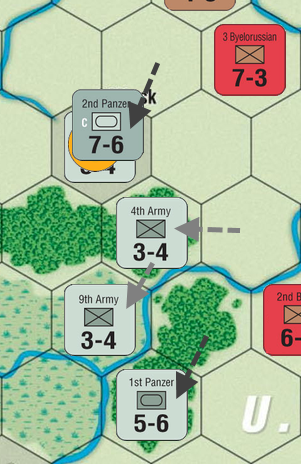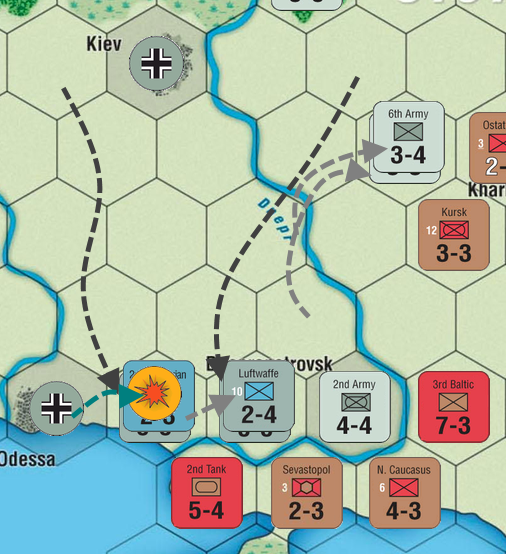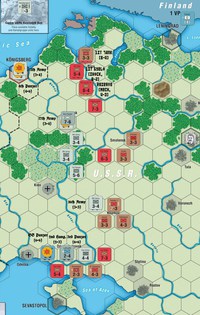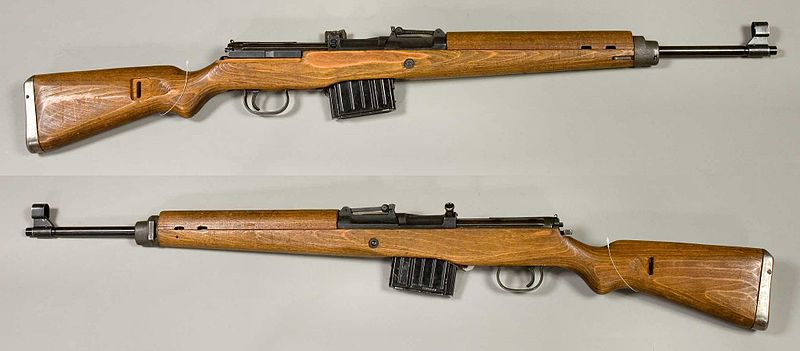Part 92: Turn 13 - Axis Combat Phase


11th Army moves into Koenigsberg so as to better reinforce the city against the approaching Red Army. The citizens of Germany are still quietly hoping for the best, but the prospect of a Soviet force entering Germany itself is a serious threat to national morale. No evacuation orders have been given yet, however.

In the centre, the Axis forces reshuffle and present a cohesive line in the defensible terrain of the Pripyat marshes.

West of Dnepropetrovsk, the Axis concentrate their forces around the Crimean breakout salient. There is finally talk of an offensive, even if a limited one. Two armies also move towards Kharkov to present a line to the Soviets and keep them away from the Dneper.

The 3rd Rumanian becomes a reserve to be placed wherever the front needs demand.


I need up to 5 Target Hexes from Tekopo. Once he posts those, The Sandman may discard cards to place Counterblows. After both Target and Counterblow hexes are listed and we have a full list of battles for the turn, Tekopo may commit cards to specific battles, followed by The Sandman doing the same. Meanwhile, Army Group commanders post which units take part in which battles and where would they advance in case of a success (or retreat, if there is a possibility of a CA result), and Sector commanders post their preferred retreat destinations (and, if there is a chance of a CA, whether or not they would accept it and where would they advance to, given the chance). The deadline for all this is Sunday, July 20, 7 PM GMT.
Should the Soviet command structure change in the coming hours, the responsibilities are shifted to their new respective holders, but any orders placed beforehand stand until otherwise amended.

What you see above is the Gewehr 43, also known as Karbiner 43, a semi-automatic infantry rifle of the Wehrmacht. The Germans had an interest in equipping their forces with semi-automatics already in 1940, but the two 1941 designs, one by Mauser and one by Walther, proved unreliable and were not introduced in large numbers. After Barbarossa, the Germans have learned that the Soviets were already using semi-automatic SVT-38 and SVT-40 rifles on a quite large scale, which pushed them into accelerating the development of one of their own. The design, however, wasn't ready until 1943.
The intended role for the G43 was not to become the primary infantry weapon, as was the M1 Garand in the US, but rather to complement regular bolt-action rifles in infantry formations and serve as sniper guns. This stems both from the fact that they were more expensive to produce and that the German infantry unit was structured differently from their American or Soviet counterparts, with the main volume of fire being provided by the heavy machine guns. Still, the Germans built over 400 000 G43s over the course of the war. However, they were only briefly used after the war by East Germans and Czechoslovaks, in part because it used the 7,92mm Mauser round which quickly degraded in popularity after 1945, with both NATO and the Warsaw Pact adopting 7,62mm rounds (albeit of differing lengths) as their primary rifle ammo. While we're touching on the rounds: the gun was equipped with a removable box magazine, but was intended to be loaded with clips, and being the rifle ignoramus that I am, I have no idea why this would be a good solution to anything (and why put a magazine if you're using clips?).